Guest Post: Fennel and Fern on Garden Photography
When Issy Eyre from Fennel and Fern asked me recently if I'd like a guest post sharing her top tips for taking luscious plant photographs like she has on her blog, I was delighted to say yes...
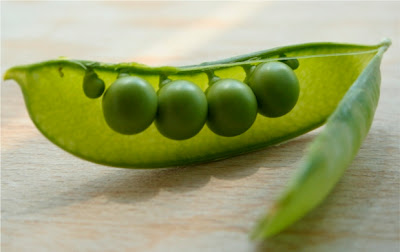 Plants sit so well for their portraits: I love photographing them. Crouching on slightly damp grass to photograph a shy bulb, or contorting into an odd position to snap the arching stems of a witch hazel has become a bit of an addiction ever since I started blogging in 2008. It's not just about taking a photo of the plant: it is capturing its character and its setting that grips me so.
Plants sit so well for their portraits: I love photographing them. Crouching on slightly damp grass to photograph a shy bulb, or contorting into an odd position to snap the arching stems of a witch hazel has become a bit of an addiction ever since I started blogging in 2008. It's not just about taking a photo of the plant: it is capturing its character and its setting that grips me so.
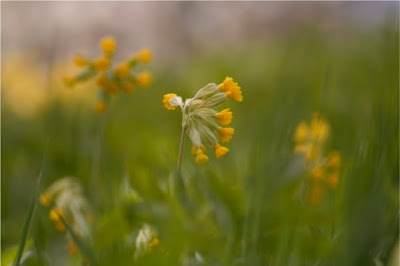 I taught myself photography with the help of a point-and-shoot Nikon Coolpix, and more recently, a Canon EOS 350d. Most of my favourite shots have come about through a mixture of messing about with the camera and leafing through the work of my favourite garden photographers, including Rachel Warne, Marianne Majerus and blogger Susy Morris.
I taught myself photography with the help of a point-and-shoot Nikon Coolpix, and more recently, a Canon EOS 350d. Most of my favourite shots have come about through a mixture of messing about with the camera and leafing through the work of my favourite garden photographers, including Rachel Warne, Marianne Majerus and blogger Susy Morris.
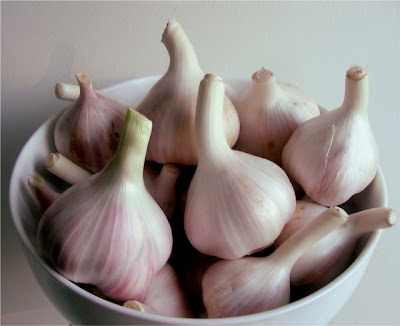
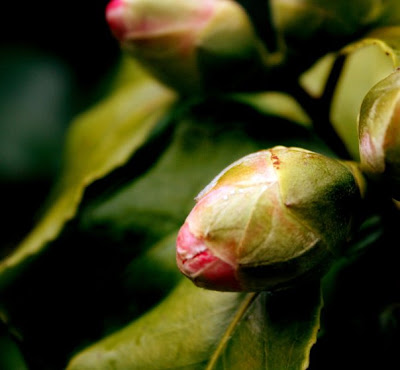 Far from technical knowledge, I've found the most important ingredient in a photo is the photographer's own eye. Our own eyesight is totally deceptive: we gaze at the things that we love most about a view, and manage to filter out all the boring details that a camera so willingly picks up. So learning what it is that attracted me to a plant in the first place (the fresh, clean rose petals resting on one another? The light tickling the edges of the leaves?), and then working out how to arrange the whole photograph around that was a key step for me in moving from slightly boring snaps to images that made me very happy.
Far from technical knowledge, I've found the most important ingredient in a photo is the photographer's own eye. Our own eyesight is totally deceptive: we gaze at the things that we love most about a view, and manage to filter out all the boring details that a camera so willingly picks up. So learning what it is that attracted me to a plant in the first place (the fresh, clean rose petals resting on one another? The light tickling the edges of the leaves?), and then working out how to arrange the whole photograph around that was a key step for me in moving from slightly boring snaps to images that made me very happy.
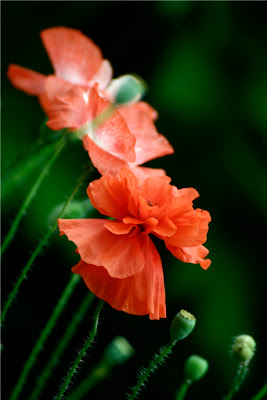 One of the biggest mistakes I made initially was cramming too much into the image. I would take a photo which included the whole plant, and the soil and dead leaves around it as well. Now I tend to get much closer, and I try to work with as shallow a depth of field (this means how far into the background you can see) as possible. I also take care that there are not lots of different colours in shot. This just confuses the eye, and makes the photo look messy.
One of the biggest mistakes I made initially was cramming too much into the image. I would take a photo which included the whole plant, and the soil and dead leaves around it as well. Now I tend to get much closer, and I try to work with as shallow a depth of field (this means how far into the background you can see) as possible. I also take care that there are not lots of different colours in shot. This just confuses the eye, and makes the photo look messy.
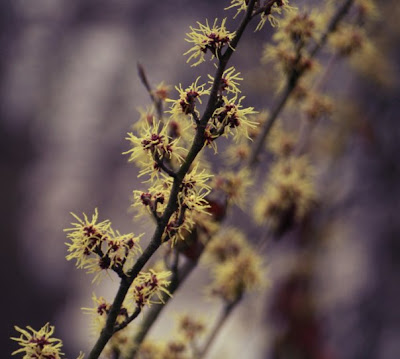 Once you've taken your image, it's time for a little post-shoot editing. I'm trained in Photoshop, but now use the free, open-source GNU Image Manipulation Programme. Some of its most useful tools are levels, curves, and the dodge and burn tools. Adjusting the levels is a more sophisticated way of altering brightness and contrast without damaging the quality of the image, and curves change the saturation of red, green or blue in the image. Just a little tweak on one of the curves can transform a picture, such as this image of a summer snowflake, which has had its blue saturation increased very slightly. I use the burn tool to lift the central subject out of the photo by brushing the burn around the edges very gently.
Once you've taken your image, it's time for a little post-shoot editing. I'm trained in Photoshop, but now use the free, open-source GNU Image Manipulation Programme. Some of its most useful tools are levels, curves, and the dodge and burn tools. Adjusting the levels is a more sophisticated way of altering brightness and contrast without damaging the quality of the image, and curves change the saturation of red, green or blue in the image. Just a little tweak on one of the curves can transform a picture, such as this image of a summer snowflake, which has had its blue saturation increased very slightly. I use the burn tool to lift the central subject out of the photo by brushing the burn around the edges very gently.
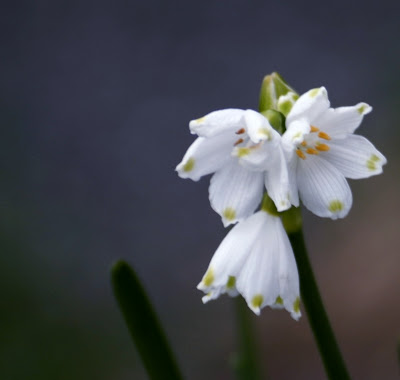 Once you're fiddling with your camera and taking as many shots of flowers as you possibly can, all this will seem terribly basic, but it's a start. The best thing you can possibly do is crouch down on that grass and start snapping your tulips and alliums. Keep doing it until you find a shot you love, and then shoot some more. It's great fun.
Once you're fiddling with your camera and taking as many shots of flowers as you possibly can, all this will seem terribly basic, but it's a start. The best thing you can possibly do is crouch down on that grass and start snapping your tulips and alliums. Keep doing it until you find a shot you love, and then shoot some more. It's great fun.
Thanks for a fab guest post Issy :) Now, how about you having a go and showing us the results of your endeavours via your blog? You might like to check out Issy's blog for further inspiration or try the experiment Happy Mouffetard showed us recently. Or do you have a top photography tip to share with us in the comments below?
All images are courtesy and copyright of Issy Eyre.
 Plants sit so well for their portraits: I love photographing them. Crouching on slightly damp grass to photograph a shy bulb, or contorting into an odd position to snap the arching stems of a witch hazel has become a bit of an addiction ever since I started blogging in 2008. It's not just about taking a photo of the plant: it is capturing its character and its setting that grips me so.
Plants sit so well for their portraits: I love photographing them. Crouching on slightly damp grass to photograph a shy bulb, or contorting into an odd position to snap the arching stems of a witch hazel has become a bit of an addiction ever since I started blogging in 2008. It's not just about taking a photo of the plant: it is capturing its character and its setting that grips me so. I taught myself photography with the help of a point-and-shoot Nikon Coolpix, and more recently, a Canon EOS 350d. Most of my favourite shots have come about through a mixture of messing about with the camera and leafing through the work of my favourite garden photographers, including Rachel Warne, Marianne Majerus and blogger Susy Morris.
I taught myself photography with the help of a point-and-shoot Nikon Coolpix, and more recently, a Canon EOS 350d. Most of my favourite shots have come about through a mixture of messing about with the camera and leafing through the work of my favourite garden photographers, including Rachel Warne, Marianne Majerus and blogger Susy Morris.
 Far from technical knowledge, I've found the most important ingredient in a photo is the photographer's own eye. Our own eyesight is totally deceptive: we gaze at the things that we love most about a view, and manage to filter out all the boring details that a camera so willingly picks up. So learning what it is that attracted me to a plant in the first place (the fresh, clean rose petals resting on one another? The light tickling the edges of the leaves?), and then working out how to arrange the whole photograph around that was a key step for me in moving from slightly boring snaps to images that made me very happy.
Far from technical knowledge, I've found the most important ingredient in a photo is the photographer's own eye. Our own eyesight is totally deceptive: we gaze at the things that we love most about a view, and manage to filter out all the boring details that a camera so willingly picks up. So learning what it is that attracted me to a plant in the first place (the fresh, clean rose petals resting on one another? The light tickling the edges of the leaves?), and then working out how to arrange the whole photograph around that was a key step for me in moving from slightly boring snaps to images that made me very happy. One of the biggest mistakes I made initially was cramming too much into the image. I would take a photo which included the whole plant, and the soil and dead leaves around it as well. Now I tend to get much closer, and I try to work with as shallow a depth of field (this means how far into the background you can see) as possible. I also take care that there are not lots of different colours in shot. This just confuses the eye, and makes the photo look messy.
One of the biggest mistakes I made initially was cramming too much into the image. I would take a photo which included the whole plant, and the soil and dead leaves around it as well. Now I tend to get much closer, and I try to work with as shallow a depth of field (this means how far into the background you can see) as possible. I also take care that there are not lots of different colours in shot. This just confuses the eye, and makes the photo look messy. Once you've taken your image, it's time for a little post-shoot editing. I'm trained in Photoshop, but now use the free, open-source GNU Image Manipulation Programme. Some of its most useful tools are levels, curves, and the dodge and burn tools. Adjusting the levels is a more sophisticated way of altering brightness and contrast without damaging the quality of the image, and curves change the saturation of red, green or blue in the image. Just a little tweak on one of the curves can transform a picture, such as this image of a summer snowflake, which has had its blue saturation increased very slightly. I use the burn tool to lift the central subject out of the photo by brushing the burn around the edges very gently.
Once you've taken your image, it's time for a little post-shoot editing. I'm trained in Photoshop, but now use the free, open-source GNU Image Manipulation Programme. Some of its most useful tools are levels, curves, and the dodge and burn tools. Adjusting the levels is a more sophisticated way of altering brightness and contrast without damaging the quality of the image, and curves change the saturation of red, green or blue in the image. Just a little tweak on one of the curves can transform a picture, such as this image of a summer snowflake, which has had its blue saturation increased very slightly. I use the burn tool to lift the central subject out of the photo by brushing the burn around the edges very gently. Once you're fiddling with your camera and taking as many shots of flowers as you possibly can, all this will seem terribly basic, but it's a start. The best thing you can possibly do is crouch down on that grass and start snapping your tulips and alliums. Keep doing it until you find a shot you love, and then shoot some more. It's great fun.
Once you're fiddling with your camera and taking as many shots of flowers as you possibly can, all this will seem terribly basic, but it's a start. The best thing you can possibly do is crouch down on that grass and start snapping your tulips and alliums. Keep doing it until you find a shot you love, and then shoot some more. It's great fun.Thanks for a fab guest post Issy :) Now, how about you having a go and showing us the results of your endeavours via your blog? You might like to check out Issy's blog for further inspiration or try the experiment Happy Mouffetard showed us recently. Or do you have a top photography tip to share with us in the comments below?
All images are courtesy and copyright of Issy Eyre.










Really lovely informative post - thanks Issy/VP! Great to have all the techy details as well and a heads-up to the editing software. I'm also photoshop trained so it will be interesting to try out Issy's alternative. Caro x
ReplyDeleteGreat post, very inspiring! I love taking the pics on my blog, and think, now and then, I get a great one, but there's always more to learn and that whole idea of capturing what drew you to an image rather than the whole area the eye sees is certaintly something I need to work on. :)
ReplyDeleteThanks for the link, VP - just wish I could take photos as good as Issy. Great post Issy - inspiring.
ReplyDeleteWhat a wonderful informative post - thank you. I started my blog in January taking a few garden snaps and discovered that a love of photography and have developed from there. Still very much an amateur, I have put photography lessons on my birthday list. Your photos are great and an inspiration.
ReplyDeleteRonnie
Great tips! I routinely use Photoshop levels and curves to make a few adjustments, but have never tried the dodge and burn tools. I will have to give them a whirl.
ReplyDeleteThanks VP. I'm very aware that I'm not very happy with the quality of my photography, so I'm going to get out there with your tips in mind and give it another go!
ReplyDeleteSome beautiful images from Issy ~ love that pea pod. Will be checking out the GNU programme. Thanks VP :)
ReplyDeleteP.S. Thanks to Issy too :)
ReplyDeleteWhat a lovely post.. I was supposed to do a garden photography day at Great Dixter last year but it was cancelled. THis reminds me to investigate whether others are still running.
ReplyDeleteWhat I love about photographing plants, particularly with the macro lens, is that it makes you note the incredible complexity and beauty of each part of them. Even weeds!!
Fabulous shots, Issy, and thank you for the information (and VP for publishing it here). I use GIMP too, but have never found any instructions for it (help is no use unless you know what you're looking for!), so it's very much trial and error, especially as I've never used Photoshop, so I don't know all the things which can be done. If you have come across a good beginner's guide to GIMP, please let me know ...
ReplyDeleteLovely photos and tips! Really like the lighting on that pea pod. :)
ReplyDeleteHi everyone - so glad you enjoyed Issy's post. Don't thank me - thank Issy. I'm just the publisher! ;)
ReplyDeleteHM - I love your photos and I thought your light experiment most interesting. It's a good exercise for others to try.
Fab post! I was told the other day by a photographer that the secret of a good photo is a good lens and a good eye. Can that be true?
ReplyDeleteColleen also posted a comment, but it got lost in all that Bloggery last week:
ReplyDeleteFab post! I was told the other day by a photographer that the secret of a good photo is a good lens and a good eye. Can that be true?
Sounds pretty good to me!
I too find much inspiration in seeing other people's work as well, from books, blogs and so many other places.
ReplyDeleteI think that practice, practice, practice really helps make your photos better every time you pull out your camera. I try to make sure I spend some time each and every day taking a few photos, even if it's just of mundane things that are happening in my life. Trying to capture regular things in different and interesting ways really helps hone your creative skills. (funny that we have the same camera :) Love the image of the witch hazel - perfect way to capture that beautiful tree!
Taking the time to look through your photos also helps, I try to be critical, I notice what I like and don't about each image from each angle. Taking photos at different times of the day with different amounts of light helps as well. Everything looks beautiful during that golden hour right before sunset and I find pretty much whatever I photograph at that time looks really nice.
PS, I'm a mac person so I LOVE using Aperture for my images. I don't do much post production as my goals are to get my photos looking as good as possible straight out of my camera - but I do tweak a few here and there. Organizing and labeling your images is imperative when you're taking so many.
Also - don't forget to have a backup system set up - it would be terrible to lose all your images due to a hard drive failure or something (Flickr is a great place to keep key ones you love).
Chiot's Run - welcome! Thanks so much for your lengthy comment crammed full of hints and tips - worth a post in itself :)
ReplyDelete